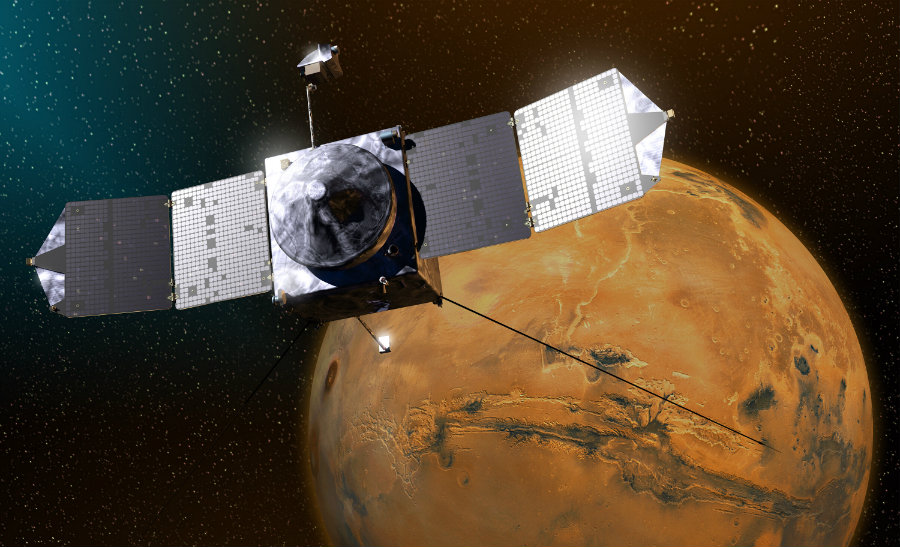The Mars Atmosphere and Volatile Evolution spacecraft (MAVEN) had to change its original orbiting course to avoid a direct collision with one of Mars’ moons, in this case, the dark moon Phobos. The maneuver was not pre-scheduled by NASA’s engineers as they had to act quickly to avert a collision that could destroy the spacecraft instantly.
NASA’s MAVEN was launched in 2013 and has been orbiting Mars for over two years know. The intention of the space probe is to analyze the planet’s upper atmosphere, the ionosphere, and the interactions that can be produced between the planet’s ecosystem and the sun and solar winds.

Last Tuesday, NASA conducted a particular maneuver for the space probe not to crash into the dark moon of Phobos. The engineers forced a rocket motor burn that increased the speed of the spacecraft by 0.4 meters per second, which is less than 1 mile per hour. However, even when it seems meaningless, this speed increase is the reason why the MAVEN will not crash into the moon, as the spacecraft will fail the moon orbit by 2.5 minutes.
According to the registers, this is the first time since MAVEN is orbiting Mars that an avoidance maneuver is required. The risk of collision presented on February 28 is also the first one since 2014. Both orbiting paths of the MAVEN and Phobos are well-known by the scientific team in charge of the mission. However, the spacecraft was forced to perform an emergency maneuver, which intrigued the engineers working at NASA.
How does NASA avoid collisions?
Given the fact that MAVEN has an elliptical orbit around the Red Planet, the path that follows can cross another object’s orbit at a particular moment. In this case, there are many chances that MAVEN and Phobos cross each other paths at any time of the year. These possibilities increase the risk of a collision that could destroy the spacecraft and with it years of investigations.

However, given the risk that this represents, there is a team of investigators that are continuously tracking each space object orbit to know when a space probe could be in danger. These exhaustive observations are made at NASA’s Jet Propulsion Laboratory in Pasadena, California, and there is where the sound alarm regarding the possible collision of MAVEN came from.
The team of investigators knew the possibility of the collision a week earlier, and this allowed the preparation of a mechanism to avoid it. The observations showed how there was a real chance of the moon and MAVEN colliding on March 6, giving the fact that both orbits would have encountered its crossing points very closely. And given the size of the moon Phobos, there was a good chance that they would collide if no actions were taken.
“Kudos to the JPL navigation and tracking teams for watching out for possible collisions every day of the year, and to the MAVEN spacecraft team for carrying out the maneuver flawlessly,” said MAVEN Principal Investigator Bruce Jakosky of the University of Colorado in Boulder.
Source: Phys.org
